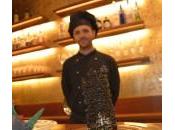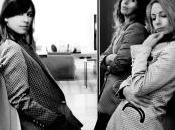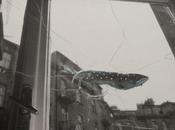La storia di questo orologio nasce ufficialmente col brevetto a Parigi nel marzo 1931 (poco più di 80 anni fa).
Here I am speaking another time of watches. And I do it with a great masterpiece: the JLC Reverso. A classic of watchmaking that is to JLC as pasta to Italy.
The story of this watch officially begins with the patent in march 1931 in Paris, that means 80 years and 2 months ago.
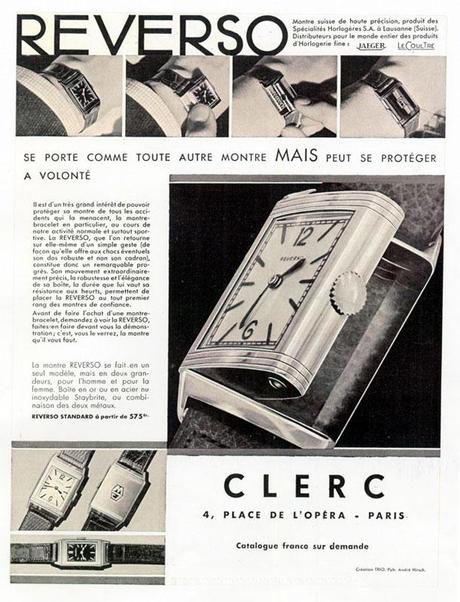
L' idea era che girando l' orologio potesse proteggersi da colpi ricevuti facendo sport (qualcosa di simile fece anche Hermès col suo primo orologio-Ermeto- di fabbricazione JLC!), visto che era frequente che ai giocatori di polo si rompesse. Eccovi la storia ufficiale, tagliata, ridotta e incollata da questo forum di orologi: http://www.orologiando.org/phpBB2/viewtopic.php?t=29866&postdays=0&postorder=asc&start=20&sid=1cc207dbce3fc04d26dfaa1217a65c26
The idea is that, by turning on itself, the watch could be protected by hits and strokes (The first Hermès watch-Ermeto- did something similar ... and the movement was JLC) received when doing sport (it was quite common to have the watch broken playing polo). Here you are the official story by an Italian watch forum (that one whose link is over there).
"Tutto ebbe inizio nell’ estate dell’anno 1930, in un polo club delle Indie Britanniche. Cesar de Trey, uomo d’affari svizzero si trovava in India per affari e quel giorno assistette ad una partita di polo. Al ricevimento che seguì l’incontro, uno dei giocatori, un ufficiale dell’armata britannica che aveva rotto il vetro durante il gioco, richiese, con un pizzico di ironia, un orologio elegante, adatto ad uomini di stile, abituati a muoversi in un ambiente raffinato e mondano, ma al tempo stesso capace di resistere contro i forti urti possibili durante le partite di polo.Certo, esistevano già gli orologi dotati di coperchio o di una griglia, ma questi erano bombati, voluminosi ed ineleganti: l’idea che invece gli fù suggerita fu quella di un orologio ribaltabile o rovesciabile e su questa idea continuò a rimurginare durante il viaggio di ritorno in Svizzera.Jaeques-David LeCoultre, allora direttore della LeCoultre & Cie, ascoltò attentamente quanto gli aveva raccontato de Trey al ritorno dall’India; tra i due era già stata realizzata una fattiva collaborazione.
"It all started in summer 1930, in a polo club of British India. Cesar de Trey, Swiss businessman attended a polo match. At the reception that followed the match, one of the players, a British Officers who had the glass of the watch broken during the play, asked with a hint of irony, a clock taht had to be elegant and suitable and also capable to to withstand strong impacts possible during polo matches. Sure, there were already watches with a lid or a grid, but they were rounded, bulky and inelegant: the idea instead was of a folding or revertible clock and on this idea he continued to think about Back in Switzerland. Jaeques-David LeCoultre, then director of LeCoultre & Cie, listened attentively to what de Trey told him when returned from India, also because the two had already made a fruitful collaboration.
Raccogliendo la sfida degli Ufficiali inglesi giocatori di polo, gli amici, oltre che soci in affari, Jaeques-David LeCoultre e Cesar de Trey si impegnarono a realizzare il progetto.Dal momento che però la Manifattura “LeCoultre & Cie” non aveva mai fabbricato casse, J-D. LeCoultre aveva bisogno degli specialisti francesi della Jaeger, con cui già collaborava, per realizzare quella ribaltabile del futuro Reverso. Nell’autunno del 1930, egli pertanto, si recò a Parigi, in rue du Louvre, 33, sede del “Reparto Orologeria” della Jager; Edmond Jaeger trovò l’idea interessante ed egli affidò il progetto della cassa reversibile all’ingegnere francese Alfred Chauvot, domiciliato in rue Bechaumont 7; il progetto del calibro fu, invece, affidato alla Manifattura Le Coltre & Cie.Il 4 marzo 1931, alle ore 13.15 col brevetto n° 712.868 fu il giorno della presentazione del progetto della cassa reversibile all'Ufficio Brevetti di Parigi, previo pagamento di una tassa di 5 franchi. : Renè Chauvot aveva presentato 17 disegni per illustrare il brevetto per “una cassa d'acciaio inossidabile, in grado di scorrere lungo le guide del proprio supporto e di rigirarsi completamente su se stessa”.
Welcoming the challenge of the English polo players, the friends, as well as business associates, Jaeques-David LeCoultre and Cesar de Trey pledged to implement the project. But the manufacturing "LeCoultre & Cie"had never created cases JD. LeCoultre needed the French Jaeger specialists, which already cooperated with them, to achieve the folding case of the future Reverso. On 4 March 1931, at 13:15 with patent No. 712,868 it was presented the project of the reversible case by Renè Chauvot, engineer of Jaeger.
Il 31 luglio 1931 Cesar De Trey acquisò i diritti del brevetto da Alfred Chauvot, ancor prima della concessione, che fu rilasciata il 3 agosto e pubblicata 14 ottobre: il compenso fu di 10,000 franchi svizzeri più 2,50 franchi per ogni orologio venduto.Il compito di produrre l’insolita cassa fu affidato, all’inizio, alla Ditta Wenger di Ginevra, che in un lasso di tempo molto breve dovette procurarsi le attrezzature occorrenti per iniziare la produzione.Il 30 novembre del 1931 de Trey, che aveva dato il nome ” Reverso ” all’orologio, fondò con Jacques David LeCoultre la compagnia "Specialites Horlogeres”, allo scopo di vendere gli orologi della Manifattura, compresi i nuovi prodotti.L’obiettivo di mettere in commercio l’orologio entro la fine dell’anno mise in crisi, tuttavia, la ditta di Le Sentier, cioè LeCoultre, in quanto nessuno dei suoi calibri era adatto alla cassa del Riverso. Solo nel secondo semestre del 1933 saranno prodotti dalla Manifattura di Le Sentier.Queste vicende spiegano anche il motivo per il quale i primi Reverso, prodotti dalla “Specialitès Horlogères”, riportino sul quadrante la sola scritta “Reverso” e “Swiss”. "
On July 31, 1931 Cesar De Trey acquired the rights of the patent by Alfred Chauvot, even before the grant, which was released on August 3 and published October 14: The compensation was more than 10,000 Swiss francs plus CHF 2.50 for each watch sold. The task of producing the unusual case was assigned initially to the company Wenger Geneva, which in a very short period of time had to procure the necessary equipment to begin production. On November 30, 1931, de Trey, who gave the name "Reverso" to the watch, with Jacques David LeCoultre founded the company "specialites Horlogeres" in order to sell the watches of the Manufacture, including the new products. The goal of putting the watch on the market later the same year put in crisis the firm of Le Sentier, LeCoultre, as none of his caliber was suitable for the Reverso case. Only in the second half of 1933 the will be produced by the Manufacture in Le Sentier. These events also explain why the first Reverso, produced by "Spécialités Horlogères" bring back the on the dial only the inscription"Reverso "and "Swiss". "Ancora, da qualche parte sta scritto che il modello era piuttosto in crisi finchè negli anni '60 non fu una concessionaria italiana di JLC a riprenderlo, esporlo e "salvarlo", facendo rinascere il mito.
Ecco qua. C'è poi chi sospetta della storia ufficiale: società come "Specialites Horlogeres" e non JLC, modello simili di altre case (Patek, Cartier...) fanno sospettare che il modello fosse diffuso e che JLC se ne sia appropriato solo negli anni '50 (quando fu registrato il nome Reverso), visto che non interessava più a nessuno.
I also found somewhere that the model was in crisis till, in the '60s, an Italian dealer of JLC exposed and "saved" it, and so the myth could born again.
There are also suspicions on the official story: a society as "Specialites Horlogeres" and not Jaeger or LeCoultre, similar models from other brand (Patek, Cartier...) make someone sospect that the model was diffused and JLC got its possession in the '50s (when the Reverso name was patented), 'cause anyone was intrested in this no more.
Comunque il Reverso è un modello che si è mantenuto nel tempo. Ad oggi esiste la versione classica, fedele all' originale (classique) o una più moderna e massiccia, contemporanea. Questi ultimi ci stupiscono perchè, girandoli, mostrano il fondello o elaborate complicazioni (fasi lunari, secondo orario...), mentre il classique rimane più semplice. C' è poi lo squadra, con cassa quadrata (orrendo, a mio parere) e, naturalmente, le preziose versioni da signora.
However the Reverso is a model that had survived to the time. Nowadays there are the classic version, a more modern and contemporary one (that's also biggest) with great complications or the possibility to see the movement, while the classique remains more simple. There's also the Squadra model, with squared case (orrible, I think) and, naturally, the precious lady version.
I più semplici possono essere personalizzati cosicchè, una volta girati e nascosto l' orologio vero e proprio, si mostra un' elegante incisione sul retro: i fiori, una data simbolica, la manina di un bebè e le sue iniziali (!), o le proprie.
The most simple can be personalized in a way that, once turned and hidden the "real watch", an incision on the back is shown: flowers, a symbolic date, the hand of a baby and his/her initials (!) or simply your owns.
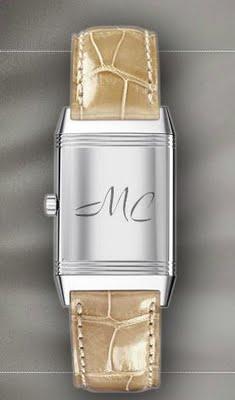
Fantastico! Ma perchè non sbavare dietro a uno di quei mostri pieni di complicazioni?
Fantastic! But why shouldn't I drool over one of that "monsters" full of complications?
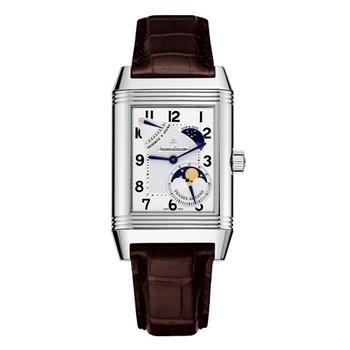
I prezzi? Dai 2950 per il classique con movimento al quarzo (-.-), 3750 e più con movimento meccanico fino ai quasi 30.000 del Grand GMT tutto in oro rosa. Un altro po' di prezzi: per il sun-moon (questo qua sopra) siamo sugli 8000 per acciaio e pelle. Il duo face, con 2 fusi orari, parte dai 6.200.
The prices? From 2950 euros for the classique with quartz movement (-.-), 3750 and more with mechanic movement, to the 30.000 of the Grand GMT in red gold. Some other price: this over here, the sun-moon, is about 8000 euros (steel and leather). The duo face, with two fuses, begins from 6.200 euros.
